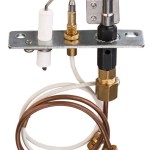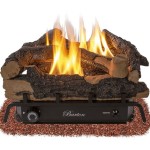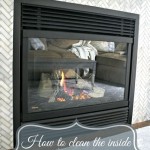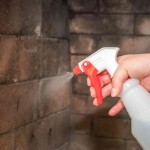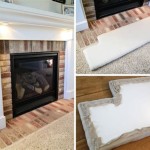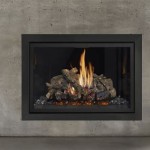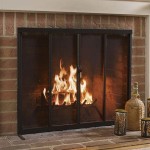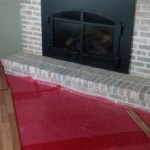How To Put In A Fireplace: A Comprehensive Guide
The installation of a fireplace can significantly enhance the ambiance and value of a home. Whether opting for a traditional wood-burning fireplace, a convenient gas fireplace, or an energy-efficient electric model, the process involves careful planning, preparation, and execution. This article provides a detailed guide on how to install a fireplace, covering essential considerations, necessary steps, and crucial safety precautions.
Before initiating any installation work, it is paramount to thoroughly research and adhere to all local building codes and regulations pertaining to fireplaces. These codes are designed to ensure safety and compliance, and non-compliance can result in significant fines and the necessity of costly rework. Contacting the local building department is a crucial first step in the process.
Key Point 1: Planning and Preparation
The success of any fireplace installation hinges on meticulous planning and thorough preparation. This phase involves several key considerations, including selecting the appropriate type of fireplace, determining the ideal location within the home, and assessing the structural requirements of the installation.
Choosing the Right Fireplace Type: Several types of fireplaces are available, each with its own advantages and disadvantages. Wood-burning fireplaces offer a classic aesthetic and the authentic crackling sound of burning wood, but they require a chimney and generate ash. Gas fireplaces provide convenience and instant heat, are typically cleaner-burning, and can be vented through a wall or roof. Electric fireplaces are the easiest to install, needing only an electrical outlet, and offer adjustable heat settings and realistic flame effects. Factors such as budget, desired aesthetic, fuel availability, and venting options should be considered when making a decision.
Selecting the Location: The location of the fireplace is crucial for both aesthetic appeal and functionality. Ideally, the fireplace should be located in a central area that maximizes heat distribution and visual impact. Consider the layout of the room, furniture placement, and the overall flow of the space. Ensure adequate clearances from combustible materials, as specified by the fireplace manufacturer and local building codes. In addition, assess the structural integrity of the wall or floor where the fireplace will be installed, as some fireplaces can be quite heavy.
Assessing Structural Requirements: A structural assessment is vital, especially for wood-burning fireplaces that require a chimney. Determine if the existing structure can support the weight of the fireplace and chimney. If a new chimney is required, a structural engineer may need to evaluate the building's framing to ensure it can handle the additional load. For gas fireplaces, ensure a gas line can be safely run to the location. For electric fireplaces, verify the availability of a dedicated electrical circuit with sufficient amperage to handle the fireplace's power requirements.
Gathering Necessary Tools and Materials: Before beginning the installation, gather all the necessary tools and materials. This will vary depending on the type of fireplace being installed but may include: a level, measuring tape, drill, screwdriver, hammer, saw (for framing and cutting), safety glasses, work gloves, cement board (for fireproofing), metal studs (for framing), drywall screws, drywall compound, paint, and any specific components or accessories recommended by the fireplace manufacturer. Having all materials readily available will streamline the installation process and minimize delays.
Key Point 2: Installation Process – Step-by-Step Guide
The installation process will vary depending on the type of fireplace being installed. However, some general steps apply to most installations. These steps must be performed carefully and in accordance with the manufacturer's instructions and local building codes.
Framing the Fireplace: Begin by framing the area where the fireplace will be installed. Use metal or wood studs to create a sturdy and fire-resistant enclosure. Ensure the framing is level and plumb. Refer to the fireplace manufacturer's specifications for the exact dimensions and clearances required. Pay particular attention to clearances from combustible materials, such as wood framing, insulation, and wiring.
Installing Fire-Resistant Materials: Cover the framing with fire-resistant materials, such as cement board or other approved non-combustible materials. Secure the cement board to the framing with drywall screws, ensuring a tight and secure fit. This layer of fire-resistant material will protect the surrounding structure from the heat generated by the fireplace. Properly seal all seams and joints in the cement board with fire-resistant tape and compound.
Running Gas Lines (For Gas Fireplaces): If installing a gas fireplace, hire a qualified and licensed gas fitter to run the gas line to the fireplace location. This is a critical step that should never be attempted by someone without the proper training and experience. The gas fitter will ensure the gas line is properly sized, installed, and tested for leaks. A dedicated shut-off valve should be installed near the fireplace for safety.
Running Electrical Wiring (For Electric Fireplaces): If installing an electric fireplace, ensure a dedicated electrical circuit with sufficient amperage is available. Run the electrical wiring to the fireplace location, following all applicable electrical codes. A qualified electrician should perform this work to ensure safety and compliance. Install a junction box near the fireplace for connecting the electrical wiring.
Installing the Fireplace Unit: Carefully position the fireplace unit within the framed enclosure. Follow the manufacturer's instructions for securing the unit to the framing. Ensure the fireplace is level and properly aligned. Connect the gas line (for gas fireplaces) or the electrical wiring (for electric fireplaces) according to the manufacturer's instructions and all applicable codes.
Installing the Venting System (For Wood-Burning and Gas Fireplaces): For wood-burning and gas fireplaces, a venting system is required to safely exhaust combustion gases. Follow the manufacturer's instructions and local building codes for installing the venting system. For wood-burning fireplaces, this typically involves installing a chimney that extends above the roofline. For gas fireplaces, a vent can be routed through a wall or roof. Ensure all joints are properly sealed to prevent leaks.
Finishing the Fireplace Surround: Once the fireplace unit is installed and the venting system is in place, the fireplace surround can be finished. This may involve installing decorative stone, brick, tile, or other materials around the fireplace opening. Use appropriate adhesives and fasteners to secure the finishing materials to the framing. Ensure the finishing materials are fire-resistant and comply with local building codes.
Key Point 3: Safety Considerations and Final Checks
Safety is paramount throughout the fireplace installation process. Taking necessary precautions and performing thorough final checks are crucial to prevent accidents and ensure the safe operation of the fireplace.
Wearing Safety Gear: Always wear appropriate safety gear, including safety glasses, work gloves, and a dust mask, when working with power tools, cutting materials, or handling insulation. This will help protect from injury and exposure to hazardous materials.
Maintaining Clearances: Maintain the required clearances from combustible materials around the fireplace. These clearances are specified by the fireplace manufacturer and local building codes. Failure to maintain adequate clearances can result in a fire hazard.
Testing Gas Connections (For Gas Fireplaces): After connecting the gas line, thoroughly test all connections for leaks using a soap and water solution. If any leaks are detected, immediately shut off the gas supply and contact a qualified gas fitter to repair the leak.
Testing Electrical Connections (For Electric Fireplaces): After connecting the electrical wiring, test the fireplace to ensure it is functioning properly. Check the heat settings, flame effects, and any other features. If any problems are detected, contact a qualified electrician to troubleshoot the issue.
Inspecting the Venting System: Carefully inspect the venting system to ensure all joints are properly sealed and that the vent is clear of any obstructions. A blocked or improperly sealed vent can result in the buildup of dangerous combustion gases.
Conducting a Test Burn: Before using the fireplace regularly, conduct a test burn to ensure it is functioning properly and that the venting system is working effectively. Monitor the fireplace closely during the test burn and check for any signs of smoke or gas leaks.
Obtaining Necessary Permits and Inspections: Ensure all necessary permits have been obtained and that the installation has been inspected by the local building department. This will ensure the installation complies with all applicable codes and regulations.
Using Fireplace Screens and Tools: Fireplace screens prevent sparks from escaping the fireplace, reducing the risk of fire hazards. Fireplace tools, such as pokers and tongs, are used to safely manage the fire.
Installing Carbon Monoxide Detectors: Install carbon monoxide detectors near the fireplace and in other areas of the home. Carbon monoxide is a colorless, odorless gas that can be produced by malfunctioning fireplaces. Detectors should be routinely checked to ensure proper functionality.
Regular Maintenance Schedule: Following the manufacturer's maintenance schedule is important to make sure that the fireplace works and remains in good condition. This includes sweeping away soot and ash from wood-burning fireplaces, changing the batteries in electronic ignition systems of gas fireplaces and verifying that the vents are clear of obstructions.
Installing a fireplace requires careful planning, preparation, and execution. Following these guidelines and adhering to all applicable codes and regulations will help ensure a safe and successful installation. If unsure about any aspect of the installation, seek assistance from qualified professionals, such as contractors, gas fitters, and electricians. The result is a functioning and safe fireplace that enhances the beauty and comfort of the home.

How To Install A Fireplace Insert Diy Save Money

How To Use A Fireplace Bob Vila

Install A Fireplace With Reble Installer Jetmaster Vic

ᑕ❶ᑐ How To Install An Electric Fireplace Insert Magikflame Blog

Diy Fireplace Install 2024 Wood Gas Installation Guide

How To Install An Electric Fireplace Insert Fireplaces Direct Learning Center

How To Install A Fireplace Homeserve Usa

How To Extinguish A Fireplace Fire Ann Arbor Mi Doctor Flue

How To Install A Gas Fireplace Corner Insert

Adding A Fireplace To Existing Home Where For Fireplaces

